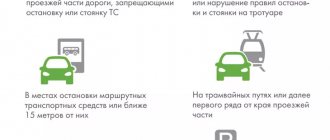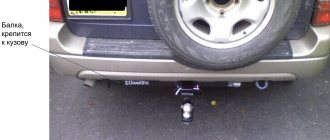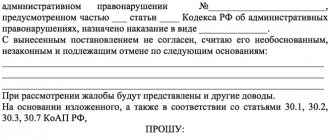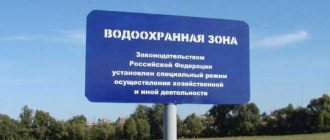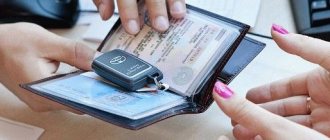Home / Protection
Back
Published: 10/27/2019
0
9
- 1 Purpose and conditions of arrest
- 2 Procedure for lifting arrest 2.1 Purchase at auction
Purpose and conditions of arrest
A car can be seized by bailiffs in cases where it is necessary to ensure its safety while the debtor repays the debt under a writ of execution issued by a court or other official or body.
A use restriction ensures that the value of the property does not decrease as a result of use. If the possibility of use is not indicated in the bailiff’s decision, this means that it cannot be used. A guarantee of suppression of actions according to the order is the availability of information about restrictions in the traffic police database, which, if such data is detected, does not carry out registration actions and does not allow passing a technical inspection.
If the debtor does not repay the debt within the period given to him for this purpose, the seized car will be sold. This also applies to a court decision on bankruptcy - after its adoption, the debtor’s property must be sold to pay off debts.
What the law says
The procedure for limiting the property of an individual who has debts is established by the Federal Law “On Enforcement Proceedings,” namely, in Article 80. In Part 1 you can read that a bailiff is responsible for the arrest.
The main purpose of seizing a car is to ensure compliance with the requirements specified in the writ of execution. This is often done to ensure that the debtor pays all installments for the loan or pays off other debts voluntarily. Otherwise, he will no longer be able to drive a car as before.
Procedure for lifting arrest
To apply such a sanction, any government agency must have sufficient grounds. The civil servant is obliged to carry out a set of various measures to collect information and confirm, in the manner prescribed by law, the need to impose it. At the same time, each government agency uses its own grounds.
They are:
- the presence of fines in the traffic police that were not paid voluntarily;
- debts for provided utilities;
- evasion of alimony;
- having a debt to a banking institution;
- failure by a legal entity to fulfill its obligations;
- in connection with a guarantee;
At the same time, it is imposed to the extent necessary to repay the debt by the person acting as the debtor. It is possible that during the bidding procedure, excess funds appear that must be returned to the debtor. Their volume is the difference between the funds received from the sale and the amount of debt obligations.
The procedure for conducting this process is provided for by the Federal Law “On Enforcement Proceedings” and is contained in Art. 64, 68, and Chapter 8.
It includes:
- issuing a warrant of arrest;
- travel to the location of the wanted object;
- drawing up an act of seizure in the presence of two witnesses;
- conducting an inventory;
- seizure of registration documents;
- transfer for storage;
- sending all relevant procedural documents to the parties.
Persons who carry out fraudulent activities take advantage of the gullibility of law-abiding citizens. Therefore, cases of purchasing vehicles containing restrictions on ownership rights are not uncommon.
Buying such a vehicle may not bring joy, but disappointment from the purchase. It will be impossible to re-register it to a new owner. Also, when buying “by proxy”, there is a risk of being stopped by a traffic police inspector; after checking the documents, he will reveal information about the arrest and take measures to remove the car from use. Which will entail the loss of both transport and the money paid for it.
Purchase by auction
When purchasing a car at a public auction where such property is sold, you can be sure that there will be no problems with registration in the future. This happens because it is being “legally cleared” and the previous owner does not have the right to make claims against the new owner. The new owner is considered a bona fide buyer.
Based on the above, we can conclude that the seizure procedure is a last resort measure to ensure payment of the debt. The powers and circle of persons who can seize a car were considered. The procedure for the actions of officials involved in ensuring the implementation of federal legislation regulating the relationship between the debtor and the collector has been determined.
A seizure placed on a car is lifted in the following cases:
- The debtor fulfills all the requirements of the writ of execution (debt repayment, payment of fines, penalties, fees);
- Termination of enforcement proceedings at the request of the court or other body that issued the writ of execution;
- If there is a court decision on the unlawful seizure of the debtor’s property;
- Termination of enforcement proceedings at the initiative of the claimant and in other cases specified in the law.
Information on the cancellation of the arrest and other restrictions on the debtor’s property is indicated in the Resolution on the completion of enforcement proceedings.
In order to lift the arrest, the owner of the car must write an application to the bailiff service, in which it is necessary to state a request for its removal, indicating all registration information. Along with the application, you must submit documents confirming the grounds for lifting the restrictions: receipts and other documents confirming payment of debt and other payments under the writ of execution, a decision to terminate enforcement proceedings made by the court, etc.
The bailiff service, based on the documents provided, must make a decision to lift the arrest on the day following receipt of the information, if the grounds are sufficient and documented. The service must inform the debtor, the recipient of the debt, and all authorities monitoring the execution of the arrest about the termination of the restrictions.
Also, bailiffs must lift the seizure so that the owner or authorized body can sell the car to pay off the debt under enforcement proceedings.
Seizure can be placed on any property, including a vehicle. Answer to the question “If a car is impounded, can you drive it?” depends on what exactly is being restricted.
The car may be subject to punitive measures:
- For property (in this case, a car).
- For registration actions.
In the latter case, you can drive a car, but you can’t give it away or sell it. Another person can use the car on the basis of a notarized power of attorney.
Most often, cars are seized due to failure to fulfill obligations to the bank. The fact is that secured loans (meaning secured by property) have a lower interest rate. It would seem like a good deal. However, if a person is unable to repay the payments for some time, the situation can become very unpleasant for him.
A car may come under the close attention of a financial institution if a car or consumer loan was taken out with the car as collateral.
The bank can take the car away from the debtor if it was purchased with credit funds (for example, on a car loan), but to do this the bank will have to contact the Bailiff Service (Bailiff Service).
In addition to problems with financial institutions, a car can be fined for other reasons.
The main reasons for seizure:
- lack of loan payments (usually a car or consumer loan);
- ignoring alimony;
- unpaid tax dues;
- presence of overdue fines;
- utility debt;
- violation of travel regulations abroad or attempt to import prohibited items.
In these cases, the debtor must be notified of the start of enforcement proceedings, and then provided with a court decision, documents on the availability of the loan and the timing of its payment.
If any documents have not been provided, you must contact the bailiff service to obtain them. The owner of a seized car must clearly understand why and how exactly his property was seized in order to subsequently solve the problem. Especially if you are going to challenge a court decision.
Sometimes representatives of the SSP cannot independently establish the location of the debtor, then a seizure is imposed on the registration actions with the car so that the debtor cannot sell or donate the property. After this, the bailiffs contact the competent authorities to search for the defaulter.
Property can be kept by the owner, by bailiffs or by third parties. There may be situations when SSP employees take the vehicle to the impound lot and seal it.
The location of the seized property is determined by the court. When the car remains with the owner, he often asks the question: if the car is under arrest, is it possible to drive it somewhere?
First of all, the debtor needs to find out the legality of the actions of the bailiffs. For example, a car taken on credit cannot be taken away for tax debts. Although if the loan payment is late, you will not be able to drive it.
Information about what exactly was seized will be useful. If registration actions are limited, then you cannot sell, give or dispose of the car in any way. In this case, you can drive if you manage to pass a technical inspection and obtain a compulsory motor liability insurance policy. In a situation where the car itself is seized, it is better to refrain from traveling around the city.
In such cases, the arrest can be lifted in one of the following ways:
- repay all existing debts or most of them and provide the bailiffs with payment receipts;
- challenge the verdict.
We invite you to familiarize yourself with: Consumer Rights Protection Law 2021, latest edition of the Consumer Rights Protection Law
The debtor may send a request to the SSP to clarify the reasons for the arrest. Until the SSP sends a response, it is possible to use the property, in this case the car.
There are several reasons for making such a decision:
- The debtor fulfilled all the requirements under the writ of execution (paid the loan, penalties, fines, etc.).
- The claimant withdrew his demand.
- The court concluded that the arrest was unlawfully imposed.
- Enforcement proceedings were terminated by the court.
After such a decision to lift restrictions is issued, the bailiff has three days to send information to the traffic police. It will be possible to use a car (as well as perform registration actions - sell, donate) only after updating the data with the road inspection authorities. Then you can resume using the car.
After a decision is made to lift the restrictions imposed by the court, it is necessary to ensure that the new information is reflected in the traffic police database.
Particular attention should be paid to the car when purchasing and check it on the traffic police website using the VIN code. If it says that no data on the imposition of restrictions was found, most likely the car is fine. Although there remains a small probability that the database data has not yet been updated, that is, information about the arrest has not yet been reflected or the bailiff has not yet initiated enforcement proceedings. It is best to immediately deregister the car with the seller and re-register it in your name with the MREO.
Removing restrictions
If a car is seized, it cannot be sold or another transaction can be made. But after all the bans are cancelled, the car owner will again have all the rights.
How to restore the ability to drive a car, what needs to be done for this? First you need to contact the bailiffs. After the debts are paid, the employee responsible for this matter will issue an appropriate ruling and remove the restrictions.
Within 3 days, the bailiffs send an electronic notification to the traffic police that the restrictions on the car have been lifted. When information about the lifting of bans appears in the State Traffic Inspectorate database, it will be possible to drive the car, sell it, and make other transactions.
To lift the arrest, you first need to make sure that the bailiff issues the appropriate order.
After this, you must proceed in the following order:
- Find out what measures were used and why. Information can be found on the portal of the traffic police and bailiffs, or by visiting the departments in person.
- Take supporting documents about sanctions.
- Pay all debts, or appeal them if you disagree.
- Obtain a resolution to cancel the arrest and present it to the traffic police, attaching receipts for payment of fines.
- Re-check the car against the database for the absence of writs of execution.
If the court decides in your favor, the ruling will come into force after 15 days. Then you can receive this stamped document from the court office and take copies to the bailiffs and the traffic police. The office is responsible for sending out copies, but to be on the safe side, it is better to do it yourself.
If the car is pledged, then its seizure is unacceptable. If you bought a car on credit, then they do not have the right to seize it due to utility debts. In this case, only the bank where you took out the loan can repossess the car. Therefore, if the FSSP has seized your car, which the bank has as collateral, you can safely go to court and appeal.
Any property, including a vehicle, that you legally own should remain yours. In their work, bailiffs often infringe on the rights of car owners. So know your rights and study the laws.
If you don't pay off the loan, will the car be repossessed?
Important!
Thus, during the division of property of spouses during a divorce, using a car for its intended purpose is fraught. Thus, the second spouse can file a petition for interim measures in relation to the vehicle, justifying this by the fact that the use of the vehicle may affect its market value. If the court accepts the claim, the car will be transferred either to an impound lot or to another person for storage.
1) seizure of property belonging to the defendant and located in his or other persons’ possession;
2) prohibiting the defendant from performing certain actions;
3) prohibiting other persons from performing certain actions related to the subject of the dispute, including transferring property to the defendant or fulfilling other obligations in relation to him;
4) suspension of the sale of property in the event of a claim for the release of property from seizure (exclusion from the inventory);
5) suspension of collection under a writ of execution contested by the debtor in court.
Art. 140 Code of Civil Procedure of the Russian Federation
A petition is submitted along with a claim for division of property, after which the court, if it rules in favor of the plaintiff, will notify the traffic police of the arrest.
If you want to challenge this decision, contact an experienced lawyer, he will help defend your rights.
Legal consultation
Get qualified help right now! Our lawyers will advise you on any issues out of turn!
Update date: May 4, 2021
Lead Counsel. Graduated from Moscow State University. M.V. Lomonosov - bachelor's and master's degrees, majoring in jurisprudence. He regularly improves his qualifications at leading universities in the country. She began 18 years of experience in the legal field as an employee of the prosecutor's office. Subsequently, she opened a private practice, which she has been conducting for more than 10 years. The highest legal culture and dozens of won litigations allow us to declare the highest legal qualifications.
In this case, the bank transfers the claim for debt collection to the court, taking into account all legal costs. The judge will schedule a hearing within the next five working days. After this, a copy of the statement of claim will be sent to you by email.
Even if you decide not to come to court to consider the case, the bank acting as the plaintiff will still indicate the possibility of consideration without your presence. As a result, the court will decide to collect the debt. A copy of the foreclosure order will be sent to your home address.
Arrested
You have one month to appeal the decision. After this, it comes into force. The court issues a writ of execution, which is transferred to the bailiff department. The bailiffs issue a ruling on the appointment of enforcement proceedings, of which you will also be notified by mail. After this, they have the right to seize your property, as well as write off your funds from bank accounts and cards.
At the moment, only three authorities have the right to impose restrictions on a car:
- Court;
- Bailiffs;
- Customs Service.
The most common reasons for imposing a penalty on a vehicle include:
- Debts on loans to commercial banking organizations;
- Failure to pay administrative fines;
- Non-payment of alimony;
- Violations of the rules for releasing the brakes of a car purchased abroad;
- Division of property after divorce.
Important! In the last two cases, the decision to assign restrictions is imposed by the Customs Service.
Seizure of a car by bailiffs
To do this, you need to enter the city/region (for example, Moscow) and the license plate number in special fields on the website. If the car is registered in another country, then you can also try searching. Then you need to indicate the country in the field (for example, Kazakhstan). The verification takes place in a matter of minutes.
On a note. If for some reason you did not receive a notification about the imposition of sanctions on your car and found out about it by chance, then you need to send a request to the bailiff service to find out the reason.
Once you know the reason for the seizure of your car, all that remains is to remove it. If the reason is debts, then they should be paid off. If the debt is large and it is not possible to pay the full amount, then you can contact the bank with a request for restructuring. After all, there is no point in banks seizing your car, they are simply trying to return the money. They will easily agree to set a new payment schedule.
To permanently lift the restrictions on your vehicle, you need to make sure that every bailiff who was involved in the seizure has issued a decree to lift the restrictions on use. After this, you must adhere to the following algorithm:
- Find out what penalties were imposed and for what reason (you can view this through the websites of the FSSP or the State Auto Inspectorate);
- Receive all documents confirming the existence of sanctions;
- Pay off accrued debts or appeal the decision if you do not agree with it;
- Receive a resolution to lift the imposed sanctions and take it to the traffic police department with a check for payment of fines or debts;
- Re-check whether there is a lien on the car.
Having a large loan debt is not a reason for the bank to take away the borrower’s vehicle. When selling a car, it can cover part of the debt. However, even with large debts, the bank does not have the right to take the car. This applies to such types of lending as:
- Credit card debts;
- Consumer loans;
- Mortgage;
- Education loans;
- Other.
Important! The issue of confiscation of a vehicle can only be resolved in court.
Everything happens as follows:
- The bank is trying to negotiate peacefully with the debtor and convince him to repay the debt. If it doesn’t work out, then the debt is transferred to a collection service.
- Collectors begin to intimidate in all ways, including threatening that if the debt is not repaid, they will take the car. There is actually no legal way for them to do this.
- If the collectors were unable to convince the debtor to pay the debt, then the case goes to court. In this case, part of the debt can be written off and interest no longer increases.
- The judge makes a decision to collect the debt, and if the borrower does not appeal, it comes into force.
- To repay the debt, a portion of the borrower's salary may be levied. No more than 50% can be withheld from income. Moreover, in this case, the debtor need not be afraid that his car will be taken away.
- They may also seize bank accounts if they exist. The funds stored on them are transferred to the bank to pay off the debt.
- If the borrower is not officially employed, has no accounts and has a large debt, then his property may be seized.
- The judge issues a ruling and passes it on to the bailiffs.
- Bailiffs begin to search for the vehicle at the place of residence, work and other places where the car may be located. Sometimes traffic police officers are involved in this.
- Once the car is found, it will be taken to the parking lot. After that, it will be sent to an auction where it will be sold to pay off the debt.
We suggest you read: How to cancel a loan
It is in the interests of the debtor to pay off the debt on his own. If it comes to the seizure of the vehicle, it will be sold at auction. If the cost of the vehicle is higher than the debt, then the difference will be returned to the debtor. However, the car will be sold at a reduced price. Therefore, the probability of returning the difference is quite small.
Seizure
Advice. You need to re-register in the name of relatives or other people you trust. However, there are some subtleties here. For example, if you transfer a car to your spouse, there is still a chance that it will be arrested, since the car in this case is joint property.
You can simply sell the car. This way you will at least get the full cost. If the car is seized and sold at auction, it will be sold for much less than it is actually worth.
It is impossible to seize a car that is pledged. The procedure itself does not provide for this. Legally, until the debt in which the car is pledged is repaid, the vehicle is the property of the bank. The banking institution has the right to sell the car in case of non-repayment of the loan.
If you bought a car on credit or left it as collateral for another loan, then the only organization that can seize and deprive you of the vehicle is the bank to which you owe it. This vehicle cannot be seized due to fines, alimony payments or utility debts. Also, no organization other than a bank can impose any measures on it.
Important! If bailiffs have seized a pledged car and the initiator of the seizure is not your creditor, who has the vehicle as pledge, then you can easily appeal this in court.
You can pick up a car that is pledged if:
- No loan payment has been made within 90 days;
- The loan agreement contains a clause providing for the repossession of the vehicle in case of delay.
Many people are interested in whether a donated car will be seized, but it is. Restrictions on a vehicle can be imposed in any case, regardless of how it was acquired. The list of property that cannot be seized is listed in the Law “On Enforcement Proceedings”. Cars are not included in this list.
Seizure of a vehicle
At the same time, other clauses of the law allow the sale of collateral property in favor of third parties (clause 5 of article 68, clause 3 of article 87). To resolve this contradiction, the FSSP issued Letter dated December 23, 2011 N12/01-31629-AP. In clause 7.1, it is recommended to seize the disputed property only if the debtor does not have enough other funds and with mandatory notification of the pledgee.
When a ban is imposed because the bailiff did not have the necessary information, you need to inform him about this. If after this the specialist refuses to lift the arrest, his actions will be appealed in court.
The bailiff, in turn, told the court that he called M.A. Mitin. on his cell phone, but he ignored the information about the appearance. The bailiff also said that at the time of the arrest he had no information about additional encumbrances on the car. Mitin M.A. provided information after the car was seized. The specialist considers his actions legal and asks to refuse the claim.
- Based on a valid court decision, the bailiff initiates enforcement proceedings.
- After 2 weeks, the arrest process begins;
- The bailiff sends a request to the traffic police to impose restrictions on registration actions;
- The bailiff visits your residential address to make an arrest;
- On the spot, the bailiff draws up an act of arrest of the car in the presence of two witnesses, to whom, together with the debtor, the rights and obligations are explained. Each of them leaves his signature on this document.
- If the car was not found, the bailiff begins to look for it. He sends the relevant documents to the traffic police;
- If the owner does not voluntarily repay the debt within 5 days, the car may be seized and sold.
How does this happen
Let's say that you took out a loan from a bank in the amount of 150 thousand rubles. and does not return it. Taking into account interest and penalties, the bank calculated the amount at 200 thousand rubles. You do not intend to satisfy the demands. Then, the bank files a claim with the court to collect the amount of debt from you, taking into account legal costs. Within 5 days, the court schedules a court hearing and notifies you by mailing a copy of the statement of claim.
Even if you do not come to the hearing of the case, and the plaintiff bank indicates in the statement of claim the possibility of considering the case without his participation, the court will legally make a positive decision. A copy of the decision to collect the full amount will be sent to your postal address. You can appeal it within a month, after which it will enter into legal force.
After entry, the court will issue a writ of execution, which will be issued or sent by mail to the claimant. Next, the bank will submit the writ of execution to the bailiff service. The bailiffs will issue a resolution to initiate enforcement proceedings and notify you about this. After this, the bailiffs have every right to search and seize your property and write off funds from all kinds of bank cards and accounts.
You need to understand how bailiffs seize a car in order to be able to settle everything peacefully at the initial stage. Like any other executive action, the procedure for arresting a car by bailiffs is a set of several actions, the sequence of which is clearly regulated by law. If a bailiff seized a car, it will look like this:
- Based on a valid court decision, the bailiff initiates enforcement proceedings.
- After 2 weeks, the arrest process begins;
- The bailiff sends a request to the traffic police to impose restrictions on registration actions;
- The bailiff visits your residential address to make an arrest;
- On the spot, the bailiff draws up an act of arrest of the car in the presence of two witnesses, to whom, together with the debtor, the rights and obligations are explained. Each of them leaves his signature on this document.
- If the car was not found, the bailiff begins to look for it. He sends the relevant documents to the traffic police;
- If the owner does not voluntarily repay the debt within 5 days, the car may be seized and sold.
How to remove an arrest
In order to remove it, you must contact the territorial division of the FSSP, which seized the car.
Subsequence:
- find out the specific body and official who made the decision;
- obtain from him an explanation of the reasons for the arrest;
- receive a copy of the writ of execution;
- familiarize yourself with the contents of the writ of execution or the notary’s writ of execution;
- eliminate the reason for imposing the restrictive measure as soon as possible;
- report the results to the bailiff;
- provide documentary evidence of the elimination of the reasons that form the basis for the application of the sanction;
- obtain a copy of the decision to lift the arrest.
It is important to remember that the resolution is sent to the traffic police. In the case where the debtor has several prohibitions from different bailiffs and according to different executive documents, the removal is made after eliminating each of the reasons that served as the basis for their issuance. This is done by issuing a separate ruling in each case.
The following situations may be grounds for removing the seizure from your car:
- The debtor has repaid all debts and satisfied the claims of creditors;
- Enforcement proceedings were terminated at the request of the claimant or by court decision;
- A court decision or ruling has been made regarding unlawful actions to seize a car.
How to remove the seizure of a car by bailiffs? When the bailiffs receive the necessary information about the possibility of canceling the arrest, they are obliged to make a decision on the release of the vehicle from arrest on the same day. A copy of this document must be sent to you and to the traffic police to reflect new information in their database. All you have to do is make sure that the State Auto Inspectorate website does not contain information about restrictive measures for your car.
Seizure of a car during a divorce
Arrested
Seizure
- We are looking into what measures were taken and for what violations. This information can be obtained through the websites of the State Auto Inspectorate and the FSSP or by visiting them in person. We receive there all the necessary documents confirming the sanctions.
- We voluntarily repay the debt or appeal the decision if we do not agree with the decision.
- We receive a resolution to lift the restriction and take it to the traffic police along with copies of receipts for payment for fines or demands.
- After this, it is recommended to re-check your car for the presence of enforcement proceedings in the enforcement bases.
A sample application to the court to remove the seizure from a vehicle is as follows.
Judge Presnensky District Court of Moscow R.R. Grishin Plaintiff Ivanova Natalya Mikhailovna, living at the address: Moscow, st. Krasnykh Zori, 28, apt. 18 Tel.: 8-922-892-89-78 Defendant Petrov Ivan Sergeevich, living at the address: Moscow, st. Bersenevskaya, 48, apt. 116 Tel.: 8-912-789-09-97
We invite you to read: Power of attorney for the right to represent interests in court
Application to lift the arrest
The Presnensky District Court is processing civil case No. 2-3451 on the claim of the plaintiff Ivanova Natalya Mikhailovna against the defendant Petrov Ivan Sergeevich for debt collection.
As a measure to secure the claim, a court ruling dated August 18, 2021 seized the property of the defendant (VAZ 21099 car, state number T 234 TR 177).
Currently, there is no longer a need for interim measures due to the fact that Ivan Sergeevich Petrov has fully repaid the debt under the claim by transferring non-cash funds to the account of the plaintiff Ivanova Natalya Mikhailovna.
According to Art. 144 of the Code of Civil Procedure of the Russian Federation, security for a claim can be canceled by the same judge or court at the request of the persons participating in the case, or at the initiative of the judge or court.
Based on the above and in accordance with the Code of Civil Procedure of the Russian Federation
ASK:
Cancel interim measures in relation to property (VAZ 21099 car, state number T 234 TR 177).
The following documents are attached to the application:
- Copy of the court ruling dated August 18, 2019.
- Payment order for the transfer of funds to the plaintiff’s account dated October 19, 2019 No. 347894.
- A copy of the resolution to initiate enforcement proceedings dated September 19, 2019.
- A copy of the vehicle seizure report dated September 20, 2019.
October 21, 2021 Signature___________
If your application is satisfied by the court, the judge will issue a ruling on the case, which, as a general rule, will enter into legal force after 15 days. Upon entry into force, the court office will give you a ruling with a note on entry, and will also send a copy of the ruling to the traffic police and the FSSP. If you doubt the integrity of the judicial apparatus, you can safely take the document to all services and departments yourself.
Any property that belongs to you documented by right of ownership must also belong to you actually. Bailiffs do not always perform their duties within the framework of the law, often “going too far”, infringing on the rights of property owners. Be armed with the necessary knowledge in the fight for your rights.
You can ask to return the car and be allowed to use it if the owner proves the need for travel. For example, a family lives far from a populated area, and a car is the only way to get to their destination. This does not guarantee a successful outcome of the case, but the bailiff can meet halfway and limit himself only to a ban on registration actions.
What is an arrest
The seizure of goods, vehicles and other things that were instruments of committing or the subjects of an administrative offense consists of drawing up an inventory of these goods, vehicles and other things with an announcement to the person in respect of whom this measure was applied to ensure proceedings in the case of an administrative offense, or to its legal to the representative about the prohibition to dispose (and, if necessary, use) them and is applied in the event that the specified goods, vehicles and other things cannot be seized and (or) their safety can be ensured without seizure. Goods, vehicles and other things that have been seized may be transferred for safekeeping to other persons appointed by the official who seized them.
According to paragraph 1 of Art. 27.14 Code of Administrative Offenses of the Russian Federation
So, the seizure of a car imposes restrictions on various registration actions with the traffic police, for example, registration/deregistration or its re-registration. Also, the car cannot be given away or sold.
Due to inexperience, some drivers confuse the seizure of an illegally parked car with an arrest, although this is not the case. Unlike arrest, the owner can pick up the car from the impound lot at any time, albeit after repaying the debt.
Arrest may be made:
- Bailiffs;
- Customs authorities;
- Other organizations after court permission.
Possible types of arrest
The fairly popular question “If a car is impounded, is it possible to drive it” can only be given a definite answer by comprehensively analyzing the situation and identifying the type of restrictive measure applied.
As a general rule, arrest is a prohibition on taking actions to dispose of movable property. This provision applies regardless of other factors - that is, if a seizure is imposed, any transactions aimed at alienation are not allowed.
Restriction of the right to use
Based on the provisions of Part 4 of Art. 80 of the Law, bailiffs may impose a ban on the use of a car.
This means that the answer to the question “Is it possible to drive a car if restrictive measures are imposed on it” will be a clear no.
It will be impossible to use such a machine for both personal and commercial purposes. Accordingly, it will also be impossible to sell it.
Seizure of property
If bailiffs have doubts about the safety of a movable property, actions can be taken to ensure that the car is preserved in proper condition.
A note about the seizure is placed in the act drawn up during the implementation of enforcement actions. In this case, the debtor’s rights are also revoked:
- sell a movable thing to another person;
- use it;
- dispose of.
If a car is arrested and confiscated in accordance with the established procedure, it is placed in a specialized parking lot with closed access, where it remains for the entire duration of the restrictive measures.
Until the restrictions are lifted, the defaulter will not be able to access or drive their car.
Transfer of property under protection or safekeeping
Art. 86 of the Law also provides for such methods of influencing the defaulter as transferring the thing under guard or safekeeping. What to do if the car is seized - is it possible to drive?
The decision to transfer is indicated in the act. The party accepting obligations to ensure proper safety may be:
- directly the debtor himself according to the writ of execution;
- members of his family;
- another individual or organization with which the territorial division of the FSSP has concluded a corresponding agreement.
The storage of the car by a certain person is confirmed by a note in the act.
The person who accepted the vehicle for safekeeping is explained the rights, obligations, as well as the liability that will arise in the event of evasion of obligations under the contract with the FSSP.
If the car is under the control of a person other than the defaulter or his family members, security services are provided on a reimbursable basis. This means that the FSSP is obliged to compensate for the costs associated with ensuring the safety of property.
How to find out about the seizure of a vehicle
To be forewarned is to be armed! How can you find out if a car is seized? And how can bailiffs check a car for arrest using its Vin number? In order to find out whether any restrictions are imposed on your car, you need to visit the official website of the State Automobile Inspectorate of the Russian Federation.
- Follow the link https://traffic police.rf/check/auto/#;
- In the “Vehicle check” window that opens, enter the Vin of your car;
- Below, select the category “Check restrictions”;
- Click the “Request Verification” link.
In the window that appears, all existing restrictions will be reflected. In addition, on the same website you can check the history of car registration in the traffic police or the history of participation in an accident. This service is also convenient when purchasing a used car. All information hidden by the former owner will be known to you.
The bailiff notifies the owner of the upcoming seizure of the vehicle. But if the owner of the car lives at a different address, the procedure may take place without his knowledge. It is also advisable to make sure that the lien is lifted after the debt is paid off.
You also need to check the restrictions when purchasing a car. Since, according to the new law, the owner of a car is not required to deregister it when transferring it to another person, the buyer can find out about the seizure only when he begins to draw up documents for himself. In this case, the transaction will be declared invalid, but this will have to be done and the money returned through the courts. Therefore, it is better to conduct a check before signing the contract.
You can find out if there are any restrictions on a vehicle:
- On the FSSP website. To do this, you will need to enter the full name of the car owner and region of residence. To obtain more accurate information, you can use the extended form and enter your date of birth (if known).
- On the traffic police website. To do this, you need to go to the “Vehicle Check” section and enter the VIN number. There are several criteria listed below, from which you must select “Check restrictions” and click the “Request review” button below it.
- Enter the VIN code. You can find it in the registration certificate.
- Select “Check restrictions”. If you wish, you can check the information on other points.
- Next, a window with a captcha will appear. You will need to enter the number shown correctly for verification.
- After this, a detailed report will appear in a similar form.
Or you can get the most complete report with data that is not on the traffic police website
A full report on the car for only 292 rubles. You can save tens of thousands by not buying a car with defects!
Is it possible to drive a seized car?
If, in accordance with Article 64 of the Federal Law, the bailiff service applies such a measure of influence on the debtor as the arrest of a vehicle, then the ban also applies to movement. Based on Article 80 of Federal Law No. 229, driving a seized vehicle is unacceptable.
Punishment may include:
- exclusion from driving;
- confiscation of the vehicle.
Confiscation of a car is possible only if an appropriate court decision is made. It is a last resort and is carried out to fully or partially repay the debt through the sale of the vehicle. A vehicle can be seized if the debt is 3 thousand rubles or more.
How is a vehicle arrested?
A protocol is drawn up on the seizure of goods, vehicles and other things. The protocol shall indicate the date and place of its preparation, position, surname and initials of the person who compiled the protocol, information about the person against whom this measure was applied to ensure proceedings in the case of an administrative offense, and about the person in whose possession the goods, vehicles and other goods are located. things that have been seized, their inventory and identification features, and a record is made of the use of photography and filming, and other established methods of recording material evidence. Materials obtained during the arrest using photography, filming, and other established methods of recording material evidence are attached to the protocol.
If necessary, goods, vehicles and other things that are seized are packaged and (or) sealed.
A copy of the protocol on the seizure of goods, vehicles and other things is handed over to the person against whom this measure of ensuring the proceedings in the case of an administrative offense was applied, or to his legal representative.
Clauses 4-6 art. 27.14 Code of Administrative Offenses of the Russian Federation
What to do if a vehicle is seized
First of all, you should find out, using the traffic police online service, for what reasons the arrest was imposed. Further, if you consider the decision to be justified, you should immediately pay off all existing debts to organizations and contact the authority that arrested you. If there is delay, the car will be sold at auction.
If the car is the subject of proceedings in court, it will be possible to remove it from arrest only after a verdict. And in the case of illegal customs clearance - only after going through the full procedure according to the law and paying all fines and taxes.
Arrested
Advice for car enthusiasts
What should car owners do in the event of an unpleasant situation with their vehicle being seized? Here are some useful tips.
- If you cannot pick up a car from a special parking lot for a long time for various reasons, you need to submit an application to the traffic police with a request to expedite the return of the vehicle. In this case, you must provide compelling reasons. For example, a car is needed to travel to work, to school, or for treatment.
- If the car is not released from the parking lot until you pay the fines, call the police. By law, 2 months are provided for payment.
During the procedure for arresting a vehicle, a protocol is drawn up in several copies. If the car owner puts his signature on it, then he admits guilt. If you disagree, you should not sign this document. The inspector will write about this in the protocol. When seized, the vehicle must be sealed. In controversial cases, contact lawyers who will help you.
